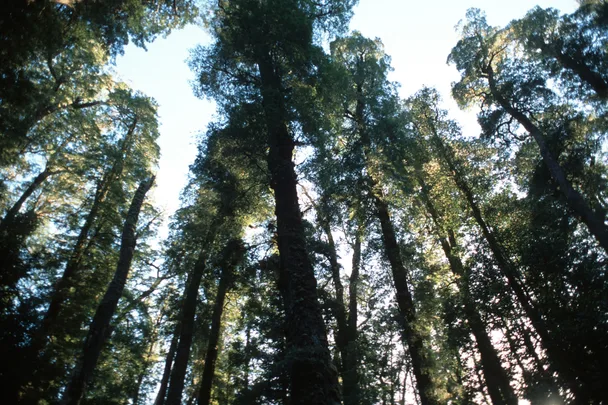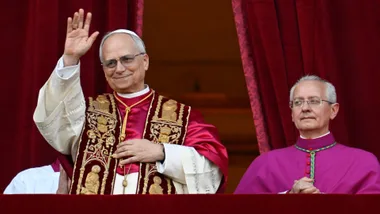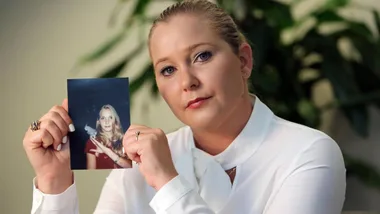Update, 4/12/20: Trees sacred to the Djab Wurrung people will be protected ahead of a trial over the state government’s controversial Western Highway duplication project.
The decision, handed down on Dember 3 by a Supreme Court judge, means the government must halt all works along the stretch of highway between Buangor and Ararat until the trial in February.
“I am satisfied that there is evidence of physical features of cultural heritage importance within the landscape of the specified area more broadly than the six identified trees and the focus areas,” Justice Forbes said, per The Age.
Original, 28/12/20: On Tuesday, October 27, the Victorian government cut down a tree, thought to be over 350 years old, in order to make way for a highway upgrade project, despite activists protesting in a bid to protect the significant location.
News of the fallen tree resulted in a passionate cry for the $157 million highway duplication project to be halted in order to preserve the sacred Djab Wurrung land, an area that holds deep cultural significance to its First Nations people.
This marks the second sacred site in 12 months to have been destroyed by the Australian government, following the destruction of ancient Aboriginal caves in Western Australia by a mining company earlier this year.
The continued massacre of sites that hold such significance to Australia’s Indigenous population has sparked a nationwide criticism of the country’s cultural heritage laws.
Below, everything to know about the growing controversy and how you can show your support.
Why Are The Djab Wurrung Trees So Significant?
The trees and landscape are part of an ancient Djab Wurrung songline from the Dreamtime and hold great cultural significance to Indigenous heritage.
Djab Wurrung woman Sissy Eileen Austin wrote for The Guardian: “Country is who we are, country is what guides us and what grounds us in all that we do as First Nations people. This particular 12km stretch, where the expansion of a road between Melbourne and Adelaide is planned, holds a deep intimate connection for Djab Wurrung women, with birthing trees that are more than 800 years old. Thousands of generations of Djab Wurrung babies have been born in this country.”
Directions Tree
The Djab Wurrung called the recently fallen tree the Directions Tree, which they believe grew from a seed and the placenta of their ancestors centuries ago. The belief is that a child’s placenta was mixed with the seed of the tree and from then on, the tree became the child’s ‘directions tree’. It is believed the tree had the power to give spiritual guidance.
Birthing Tree
Among two other trees threatened with removal are two Birthing Trees. The trees have been where local First Nation women have given birth for an estimated 50 generations.
“This is a sacred place, this is like a church. This is our church. This is a place where we connect and heal and unite as a people. It’s a place where we talk to our ancestors. No one would ever think about destroying a church for a road,” Lidia Thorpe the first Aboriginal Victorian Senator said. “It’s a part of us, it’s not just a tree. It’s an ancestor tree, it’s got a lot of knowledge.”
Grandfather Tree
Among the trees at risk on Djab Wurrung land includes a 700-year-old eucalypt known as the “grandfather” tree, the companion of the Birthing Tree. Their roots are believed to intertwine and are said to communicate.
Why Are The Sites At Risk?
Despite an agreement being reached between Indigenous representatives and the Victorian government in 2019 to ensure that 13 sacred trees would be saved from destruction, many are still at risk. Activists say this isn’t enough, and have criticised Major Roads Project Victoria for pushing on with construction despite federal court action.
The state authorities say the highway upgrade is needed to make it safer, with the route having suffered several fatal crashes over the years. However, many have noted that the proposed changes would only cut down travel time by less than five minutes.
Following the Directions Tree removal, the Victorian government defended its actions, saying it was not marked as requiring protection in an agreement with the Eastern Maar Aboriginal Corporation and was not the sacred directions tree that is now subject to federal court action.
What Will The Supreme Court Decide On?
The destruction of the Djab Wurrung trees was temporarily halted on Wednesday, October 28. The short-term future of the trees will be decided by the Victorian Supreme Court on October, 29.
How Can You Help?
Donate To The Djab Wurrung Heritage Protection Embassy
The Djab Wurrung Heritage Protection Embassy was founded to protect sacred women’s country from the Victorian government’s Western Highway duplication project in the state’s western district. It has set up a GoFundMe page raising funds for its members, who have camped along the highway since 2018 to protest the development.
Raise Awareness
If you don’t have the means to donate, spread the word via social media or word of mouth.
Email Victorian Government MPs
Supports have provided an email template addressed to Premier Andrews, Minister for Transport Jacinta Allen, Minister for Aboriginal Affairs Gabrielle Williams, and Minister for Planning Richard Wynne to be sent in by individuals.
You can find the template here.
Contact Premier Daniel Andrews’ Office Directly
Activists are calling for those who oppose the destruction of these sacred sites to call Victorian Premier Daniel Andrews’ office directly.










